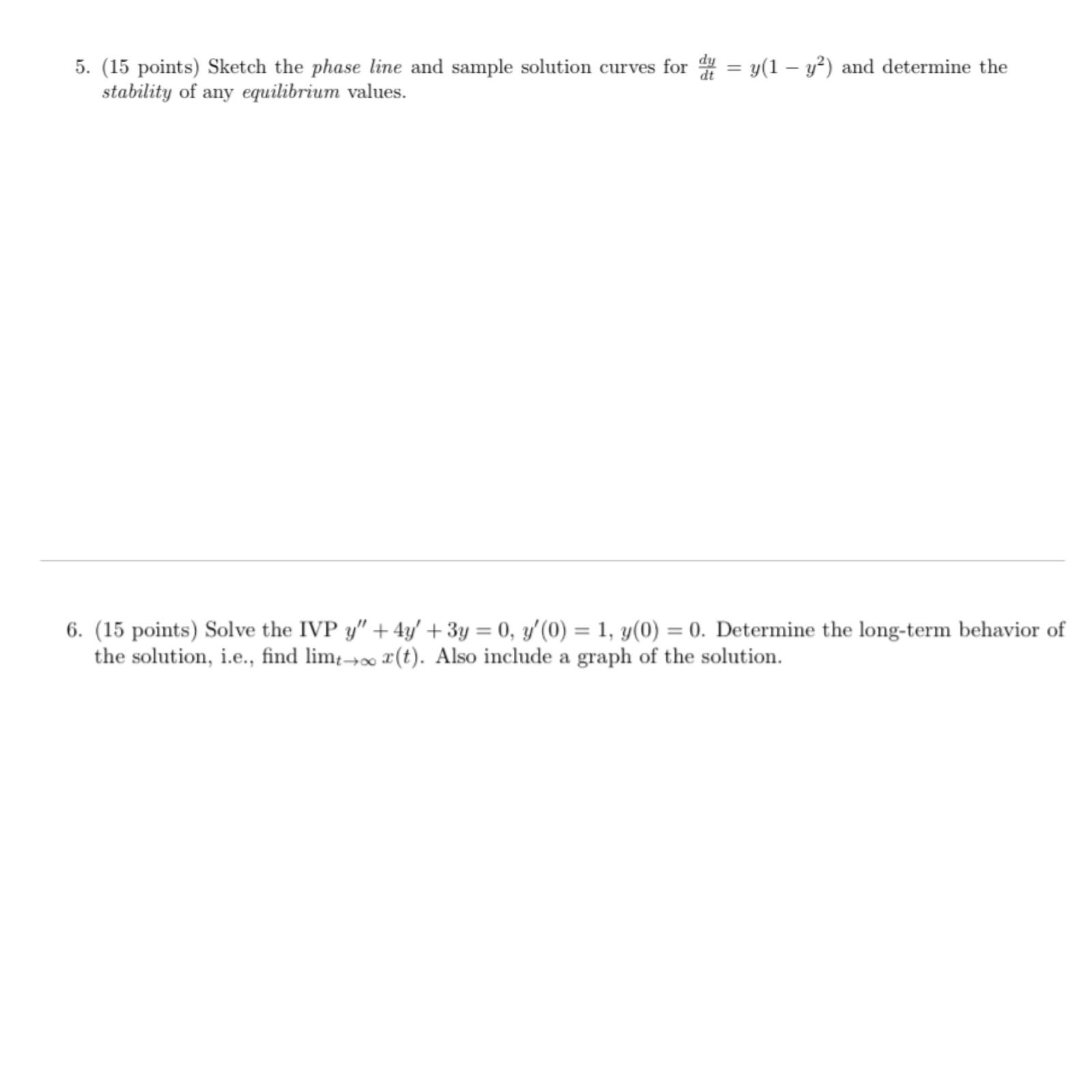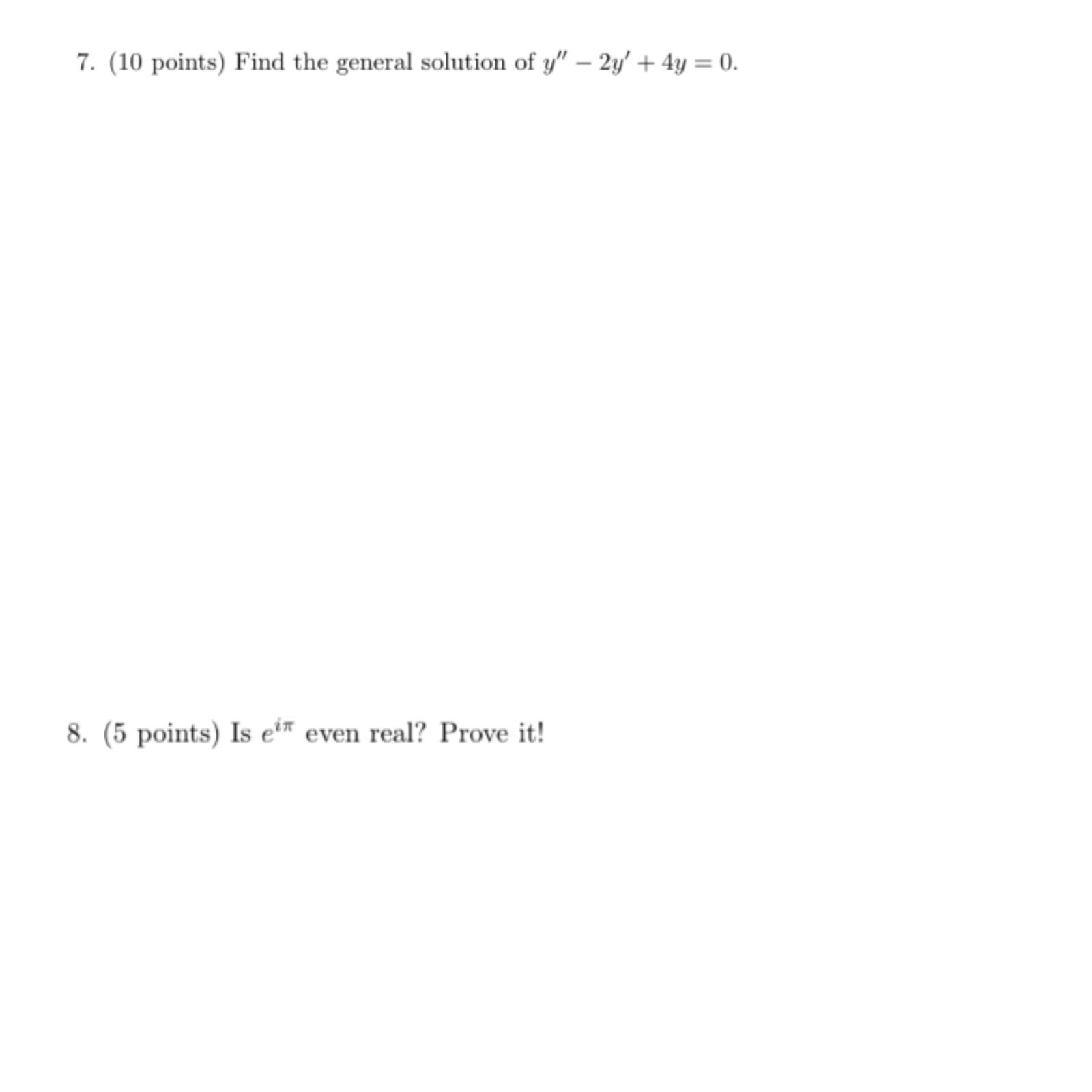Answered step by step
Verified Expert Solution
Question
1 Approved Answer
Name: 1. In a chemical reaction, the rate at which a reactant diminishes (i.e., combines with another reactant) is proportional to the amount remaining. Let



Step by Step Solution
There are 3 Steps involved in it
Step: 1

Get Instant Access to Expert-Tailored Solutions
See step-by-step solutions with expert insights and AI powered tools for academic success
Step: 2

Step: 3

Ace Your Homework with AI
Get the answers you need in no time with our AI-driven, step-by-step assistance
Get Started


